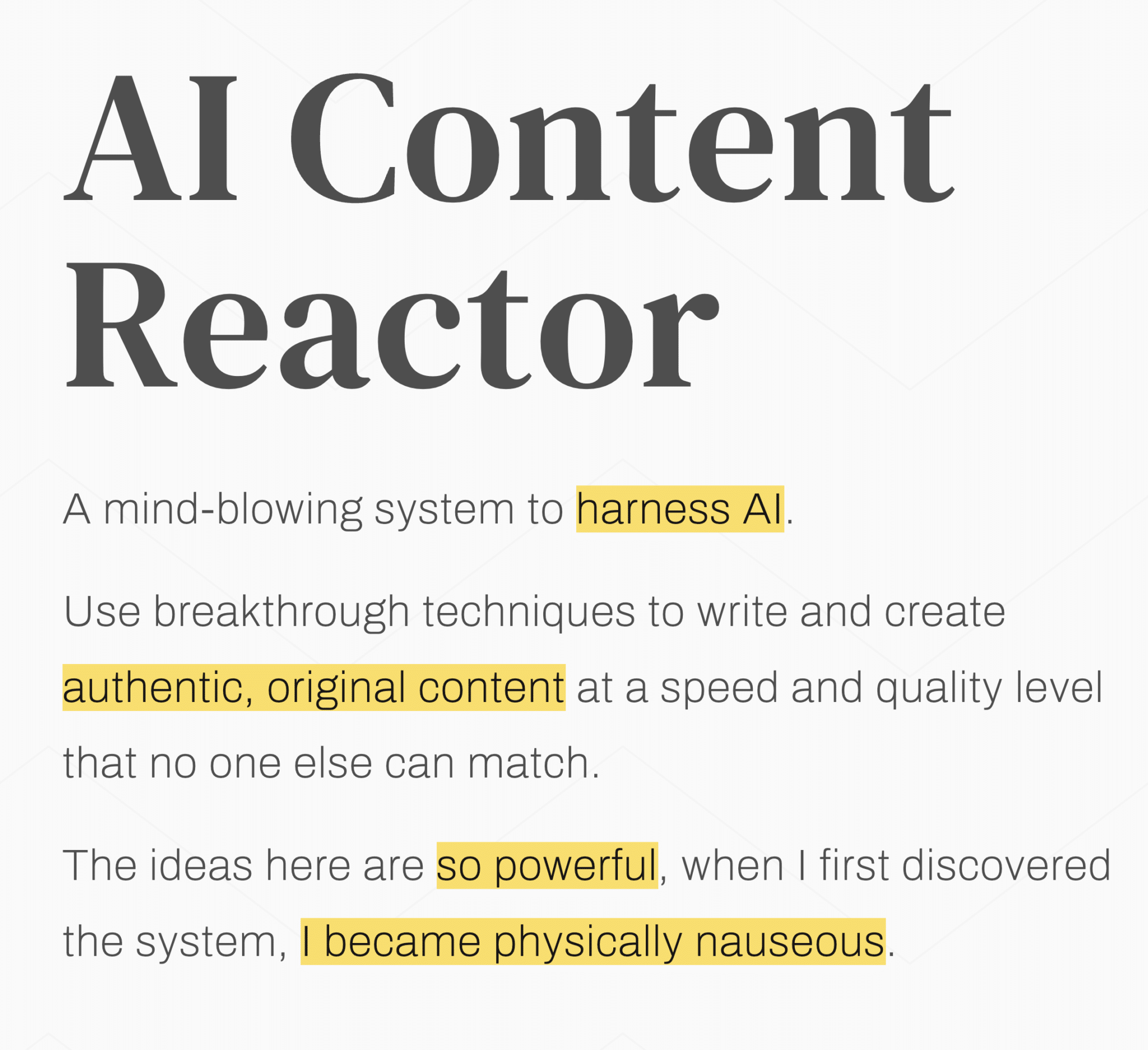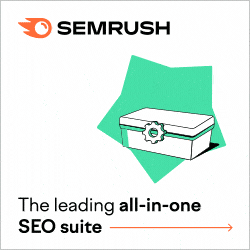Table of contents
- Building Trust: The Foundation of Your Branding Strategy
- Practical Steps to Establish Trust Through Branding Channels
- Tactics and Strategies for Maintaining Trust
- Advanced Branding: Keeping the Momentum in a Growing Business
- Referral Program
- Form Partnerships
- Final Thoughts: The Ongoing Journey of Branding
Buzzwords. Every industry seems to have them, but the marketing industry has put a whole new meaning to the word “jargon.” Most of the “new” concepts we come up with may have adapted somewhat to encompass the nature of building a brand strategy online. However, they’re still essentially the same as they always were.
The lesson should be obvious. Foundational marketing principles have timeless value.
Just because something has been used in marketing for ages doesn’t mean that it has no value. For example, “sex sells” is just as true today as it was centuries ago. You can call it sexy, sensual, seductive, titillating, or suggestive… the effect is the same.
Sex attracts (and usually holds) interest. It appeals to the viewer and creates a receptiveness to suggestions. Marketers have used sex for ages. Human nature being what it is, its effectiveness isn’t likely to fade any time soon, either.
There are many different ways to appeal to viewers, often drawing upon emotional responses. Humor, sympathy, anger, and desire are just a few. But before we can play upon those emotions to full advantage, we need to establish some level of acceptance. That is usually rooted in trust, credibility, and authority.
Building Trust: The Foundation of Your Branding Strategy
Trust is the invisible thread that connects your brand with its audience, underpinning every interaction and transaction. In a branding context, trust is the assurance customers feel when they believe a brand will deliver on its promises. It’s about consistency, reliability, and integrity.
This assurance isn’t just about the quality of products or services. It extends to every aspect of the brand experience, from customer service to ethical business practices. Establishing trust turns first-time buyers into loyal customers and advocates for your brand.
The Role of a USP and Clear Brand Definition in Building Trust
A Unique Selling Proposition (USP) is a beacon of trust. It answers the critical question every potential customer implicitly asks: “Why should I choose you?” Your USP sets you apart, highlighting what makes your brand unique and valuable to your audience. A clear and compelling USP assures customers that you understand their needs and have a special solution that others cannot offer.
Equally important is a clear brand definition. It encompasses your brand’s values, personality, and promise.
A well-defined brand is like a person with a strong sense of self. It knows what it stands for and consistently communicates its beliefs, mission, and values. This consistency is key to building trust. When customers know what your brand represents, they’re more likely to trust your products and messages.
Practical Steps to Establish Trust Through Branding Channels
Building a brand strategy can be a complex task, including several channels. Here are a few practical steps to establish trust wherever you are:
Create consistent brand messaging across all touchpoints.
Ensure your brand voice, message, and visual identity are consistent across all platforms. This includes your website, social media accounts, packaging, and marketing campaigns. Inconsistencies can confuse customers and erode trust.
Deliver on the promise in your brand positioning statement.
Your brand must live up to its USP and the expectations it sets in the positioning statement. This means your brand consistently delivers quality products, exceptional service, and the value you’ve promised. Failure to do so can break trust, often in a way that can’t be rebuilt.
Engage authentically with your audience.
Who ever heard of authenticity as a marketing strategy? Yet, successful brands use social media and other channels to engage in two-way conversations with their audience. Be transparent with your brand story, admit mistakes, and share behind-the-scenes glimpses into your brand. Authentic engagement fosters a deeper connection and trust.
Educate your customers.
Provide valuable content that educates your audience about your industry, products, or services. This positions your brand as a credible authority and trusted resource, and helps build brand recognition.
Solicit and Showcase Reviews and Testimonials
Social proof is powerful. Encourage satisfied customers to share their experiences, and prominently display these testimonials across your marketing channels. Seeing real people vouch for your brand can significantly boost trust among prospective customers.
Implement Responsible Practices
Demonstrate your commitment to ethical, sustainable, and socially responsible practices. Today’s consumers are more likely to trust brands that contribute positively to society and the planet.
By following these practical steps, you lay a solid foundation for a recognized, respected, and trusted brand. This foundation isn’t just critical for growth; it’s essential for survival in today’s competitive marketplace.
Tactics and Strategies for Maintaining Trust
Building a brand strategy and maintaining trust is an ongoing process that requires carefully planned and executed marketing efforts. Below are detailed strategies for consistent messaging, credibility building, risk management, and leveraging digital marketing to enhance trust online.
Consistent Messaging
Strategy: The consistency of your brand’s messaging should extend beyond your website. It should also include your visual identity, tone of voice, and the core messages you want to communicate.
Example: A lifestyle brand uses the same warm and inviting color scheme on and offline. It consistently communicates its commitment to sustainability and community-building in everything from blog posts to product descriptions to customer service interactions.
Credibility Building
Strategy: Establish your brand as a credible authority in your industry. Share knowledge, participate in industry conversations, and partner with respected influencers or brands.
Example: An outdoor gear company regularly publishes in-depth guides and articles on outdoor activities. It also collaborates with well-known adventurers for product reviews and is active in environmental conservation efforts. These actions demonstrate its expertise and commitment to quality and environmental stewardship, building credibility with its audience.
Risk Management
Strategy: Anticipate potential risks to your brand’s reputation and have a plan in place for addressing them. Monitor social media and online mentions of your brand. Respond swiftly and appropriately to any negative feedback or crises.
Example: A tech company identifies a product flaw. It immediately acknowledges the issue across its platforms. It explains the steps it’s taking to address it and offers refunds or replacements. This transparent and proactive approach helps to mitigate the negative impact and maintain trust with customers.
Authentic Content Creation
Strategy: Share stories and content that resonate with your audience’s values and interests. Authentic content can create a strong emotional connection and build trust over time. This is true whether it’s behind-the-scenes videos, customer testimonials, or insightful blog posts,
Example: A beauty brand shares user-generated content of real customers using its products along with their genuine reviews and stories. This authentic user content is more relatable and trustworthy than traditional advertising.
Transparent and Secure Online Transactions
Strategy: Make sure your website is secure and transparent about privacy policies and transaction processes. Displaying security badges and offering clear, easily accessible customer service and return policies can significantly increase trust in online transactions.
Example: An e-commerce store’s website displays SSL certificates and uses trusted payment gateways. It has a clear, concise privacy policy and terms of service. It also highlights a hassle-free return policy.
Engagement Through Social Proof
Strategy: Leverage reviews, endorsements, and social media interactions to provide social proof. Positive reviews and ratings on your website and third-party platforms can influence purchasing decisions and build trust with prospective customers.
Example: A restaurant encourages patrons to leave reviews on popular platforms and shares positive customer experiences on its social media. It engages with comments and reviews, addressing any concerns promptly and professionally.
Educational Content for Thought Leadership
Strategy: Position your brand as a thought leader by creating and sharing valuable educational content. Webinars, whitepapers, and insightful blog posts can demonstrate your expertise and commitment to adding value to your community.
Example: A financial services company offers free webinars on financial planning and publishes in-depth articles on market trends. This positions them as experts in their field, building trust with current and prospective clients.
Advanced Branding: Keeping the Momentum in a Growing Business
So now you’ve put a lot of time and energy into your business, and it’s starting to grow at a steady pace. Although you might think the hard part is over, it’s not. It’s always important to search for new ways to build on your brand strategy if you want to enjoy long-term success.
Your customers’ loyalty will depend on the quality of your products and services. However, the way they remember you will also play a role.
Storytelling
No matter their background or interests, everybody loves a good story. If you’re not using storytelling in your branding strategy, then you might want to reconsider. Telling stories will inspire people to like you because it reveals your human side.
Storytelling is a powerful tool in the arsenal of brand building, particularly when it comes to establishing trust and credibility. This connection is deeply rooted in how humans process information and form emotional connections. Here’s how storytelling plays a crucial role:
Emotional Connection
Humans are inherently emotional creatures, and stories have a unique way of engaging us on an emotional level. When a brand shares a story—whether it’s the founder’s journey, the inspiration behind a product, or customer success stories—it creates an emotional connection with the audience. This emotional bond is a key element in building trust, as people are more likely to trust entities they feel emotionally connected to.
Humanizing the Brand
Storytelling adds a human element to a brand, making it more relatable and approachable. When a company shares its challenges, successes, and failures, it becomes more than just a business. It becomes a living, breathing entity with values, dreams, and experiences. This humanization fosters a sense of familiarity and trust, as customers see the people behind the products or services.
Demonstrating Values and Authenticity
A well-crafted story can effectively communicate a brand’s values and authenticity. By telling stories that highlight ethical practices, dedication to quality, customer service, or community involvement, brands can showcase what they stand for. Demonstrating these values authentically helps to build credibility, as actions speak louder than claims or advertisements.
Providing Proof Through Narrative
Stories often provide context for how a product or service has made a difference in someone’s life or work. This is where storytelling intersects with social proof. Hearing or reading about real-life applications and outcomes helps to solidify trust in the brand’s claims.
It’s one thing to say your product can solve a problem. It’s far more convincing to share a narrative that demonstrates it in action. (Hint: User-generated content would be great, here)
Simplifying Complex Information
Sometimes, brands need to convey complex information or concepts. Storytelling can transform these into digestible and engaging narratives. This not only makes the information more accessible but also builds trust by empowering the audience to understand and appreciate the value being offered.
Example of Effective Storytelling
Consider a brand like Patagonia, known for its commitment to environmental sustainability. Through storytelling, Patagonia has built a strong trust with its customer base. They the origins of their materials, the environmental impact of their supply chain, and stories of their conservation efforts.
Customers don’t just see a clothing item. They see a narrative of conservation and ethical responsibility, enhancing the brand’s credibility and their loyalty to it.
Storytelling is a strategic tool for building a deep, lasting trust and credibility with an audience. To connect with your customers, talk about how you started your business and the things that inspired you. If your goal is to encourage your target audience to connect with you, then discuss the roadblocks and obstacles that you faced in the beginning. You can go on to mention how those obstacles shaped you as a person and helped you form your mission statement.
Referral Program
A referral program is a strategic approach that leverages the existing customer base to acquire new customers through recommendations. It plays a significant role in enhancing a brand’s trust and credibility for several reasons:
Leveraging Social Proof
Referral programs are built on the concept of social proof. It’s a psychological phenomenon in which people act like others in an attempt to reflect correct behavior for a given situation.
When existing customers recommend a brand to their friends or family, it serves as a powerful endorsement. It signals to potential customers that the brand is trusted and valued by people like them, which can significantly lower the barrier to trust.
Enhancing Customer Loyalty
For existing customers, participating in a referral program and seeing their recommendations lead to rewards reinforces their positive feelings about the brand. This strengthens their loyalty and trust in the brand’s commitment to valuing and rewarding customer relationships. A well-designed referral program shows that a brand is confident in the quality of its offerings. It also shows a willingness to reward customers for sharing their positive experiences.
Creating a Virtuous Cycle of Trust
Referral programs can create a virtuous cycle: satisfied customers refer others, those new customers have positive experiences and become satisfied customers themselves, and the cycle continues. Each successful referral and subsequent positive experience reinforces the brand’s credibility and trustworthiness, not just for the new customer but for the referrer as well.
Demonstrating Confidence in Product Quality
By initiating a referral program, a brand essentially says, “We believe in our products/services so much that we’re willing to reward you for spreading the word.” This confidence can be contagious, encouraging others to trust in the brand’s quality and integrity.
Transparency and Honesty
A transparent referral program, where the terms are clear, and the rewards are delivered as promised, further cements trust in the brand. It demonstrates that the brand is honest and straightforward in its dealings, which are crucial components of credibility.
Example of Referral Program Enhancing Trust
A user recommends a subscription service to a friend using a referral link. Both the referrer and the referee receive a month of free service. The friend tries the service, loves it, and continues their subscription.
This experience not only solidifies the referrer’s belief in the value of the service (thereby increasing loyalty and trust) but also establishes a new trust relationship with the referee. The brand benefits from increased credibility and a growing customer base that feels personally connected and positively inclined towards it.
Form Partnerships
Forming partnerships, whether with other brands, influencers, non-profit organizations, or industry thought leaders, plays a pivotal role in enhancing a brand’s trust and credibility. This strategic move can benefit a brand in several ways:
Borrowed Trust
Many business leaders view other companies in their industry as competition, and they are right in a lot of cases. But if you can work with an established business, then doing so will have a positive impact on your brand.
When a brand forms a partnership with another entity that already possesses a strong, positive reputation, it benefits from what’s known as “borrowed trust.” The audience of the partner brand is likely to transfer some of their trust to the new partner based on the association alone. If a well-respected figure or organization believes in your brand enough to partner with you, their endorsement acts as a powerful signal of credibility to their audience.
Expanded Reach with Endorsement
Partnerships often grant access to a wider or different audience than a brand might typically reach on its own. When a partner endorses your product or service, it’s a recommendation from a trusted source to their audience. This endorsement can significantly lower barriers to trust among potential customers who are familiar with and trust the partner brand or individual.
Alignment of Values
Partnerships based on shared values or common goals can deeply resonate with consumers. Today’s consumers are increasingly looking to support brands that not only offer quality products or services but also reflect their personal values and contribute to the greater good. By partnering with organizations or brands that align with your brand’s values, you’re reinforcing your own brand ethos and building credibility among consumers who prioritize these factors in their purchasing decisions.
Quality and Innovation Through Collaboration
Partnerships can also lead to improved products, services, or customer experiences through collaboration. When two brands come together, they can pool their resources, expertise, and creativity to offer something new or improved to their customers. This commitment to quality and innovation enhances the customer experience and builds trust in both brands’ dedication to offering value.
Risk Management
In the context of trust and credibility, partnerships can serve as a form of risk management. Associating with reputable partners can help a brand navigate crises or challenges by leveraging the partner’s credibility and support. Moreover, successful partnerships can serve as case studies or success stories, further cementing a brand’s reputation as a trustworthy and reliable entity.
Example of Successful Partnership
A classic example of a successful partnership is the collaboration between Nike and Apple. The Nike+ product line, which integrates Nike’s athletic footwear with Apple’s technology, showcases how two brands can come together to innovate and offer unique value to their customers. This partnership leveraged Apple’s reputation for cutting-edge technology and Nike’s status as a leader in athletic wear, enhancing the credibility and trust of both brands among each other’s audiences.
Forming strategic partnerships is a powerful way to enhance a brand’s trust and credibility. By aligning with reputable partners, brands can borrow trust, reach new audiences with endorsements, showcase their values, innovate, and manage risks more effectively. These collaborations can strengthen a brand’s position in the market and deepen consumer trust, which is essential for long-term success.
Final Thoughts: The Ongoing Journey of Branding
The art of building a brand strategy on a foundation of trust is a continuous journey, not a destination. As the digital landscape evolves and consumer behaviors shift, the methods by which brands establish and maintain trust must adapt as well. The strategies we’ve explored—leveraging foundational marketing principles, embracing the power of storytelling, creating meaningful partnerships, and more—are not one-off tasks but ongoing commitments.
The essence of branding is the promise you make to your customers. Every interaction, communication, and product delivered reflects that promise. Maintaining consistency, authenticity, and transparency in these efforts is key to reinforcing trust and credibility over time. As you navigate the complexities of market changes and technological advancements, returning to the core principles of trust-building can guide your brand strategy toward sustainable growth.
Remember, building a brand on a foundation of trust is an investment in the future. It’s about creating a legacy that transcends the transactional nature of business and fosters a deep, enduring connection with your audience.
As you continue to build and evolve your brand strategy, keep trust and credibility at the forefront of your efforts. By doing so, you not only set your brand apart in a crowded marketplace but also build a loyal community of customers, advocates, and partners who believe in what you do and why you do it.
In conclusion, the branding journey is an ever-evolving path. It’s a blend of art and science, creativity and analytics, intuition, and strategy. By anchoring your efforts in the timeless principles of trust and credibility, you pave the way for lasting success and meaningful impact. Let the journey continue, with each step taken in trust and each strategy crafted with integrity, as you navigate the future of branding with confidence and purpose.






































